September 16, 2024
Building a Basic Vacuum Testing Tool Kit
Randall Schroeder
As technicians, we are often faced with build issues that can sometimes be frustrating at first, but with a little ingenuity these frustrations can be turned around and made simple. In 1989, Dodge came out with the first Fully Hydraulic Electronic Solenoid shifting transmission A604 (no shift valves) that later became the 41TE. Originally, there were lots of issues that had to be worked through but with the success of this transmission, we now have gone into an age where most all the late model transmission are shifted through electronics. There are two different methods of controlling the shift, though:
1. Solenoids that control clutch feed oil being directed through the solenoid passageways seating switches — whether controlled switching from a checkball or in the case of this discussion, separation of switch plugs.
2. Solenoids directs oil to a shifting “switch” valve (such as a valve or plug named 1-2 or 2-3 etc.) that directs the oil to the clutch it controls.
In this family of Dodge transmissions, switch plugs leaking can lead to lots of different issues ranging from pressure switch rationality codes, which are monitored through electronics, to burnt clutch assemblies that are being partially applied and smoking the clutches. Testing the bore fit of these plugs can sometimes be frustrating and often result in false answers when using conventional vacuum test procedures with a test plate (Figure 1). A good friend, fellow builder and coworker recommended this article be titled “Don’t Get Stiffed by the Switch.” So, let’s make this simple!
| Figure 1 – Typical Vacuum Test Plate Setup |
|---|
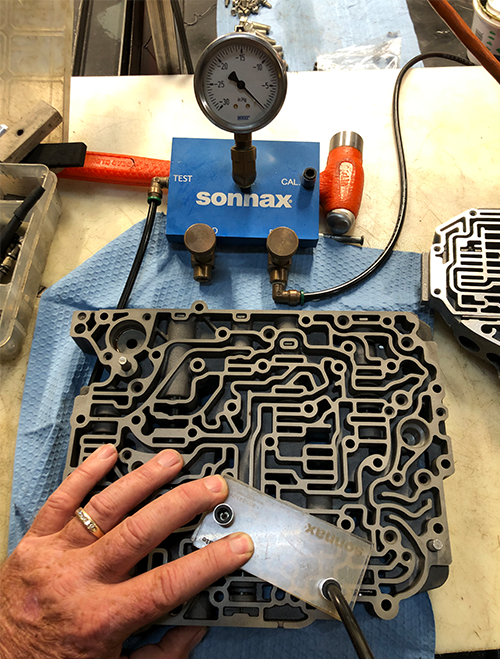 |
An easy, effective solution is to make your own test tools (Figure 2).
| Figure 2 – Custom Test Tool |
|---|
 |
Use a standard-size OE or Sonnax switch valve plug to test the valve body before or after making repairs with standard-size valves. Use a Sonnax oversized plug to make a tool for testing after the bore has been reamed for installation of an oversized Sonnax switch valve kit. Keep in mind there are two different standard sizes of switch plugs used with these units — .420" and .453" — so you'll need to have one of each size handy. Measure the OE valve large spool diameter shown to verify which one you have (Figure 3). When building your oversized test tool, the plug from either Sonnax oversized kit can be used.
| Figure 3 – Verify Plug Size by Measuring OE Switch Valve |
|---|
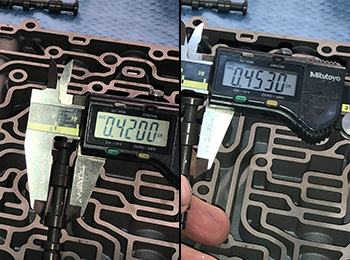 |
Here is a full list of the various Sonnax repairs available to help you make test tools. The big advantage of using a Sonnax plug as opposed to an OE is that the Sonnax plugs have a pre-drilled hole to work with. A Sonnax vacuum test fitting (VACTEST-07) also is required.
Drop-in Plug Kit 92835-02K | Oversized Plug Kit 92835-18K 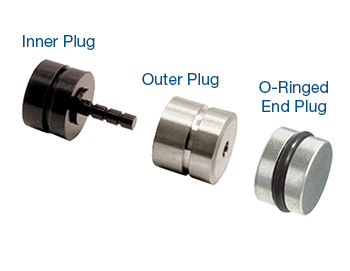 |
Drop-in Plug Kit 92835-39K | Oversized Plug Kit 92835-22K 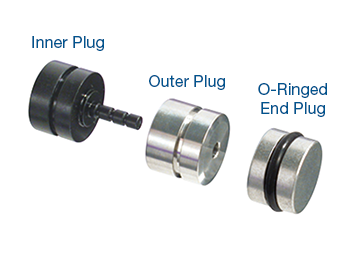 |
Two fittings per package. |
Here is the process to follow if you are using a Sonnax plug:
| Figure 4 – Drilling & Tapping |
|---|
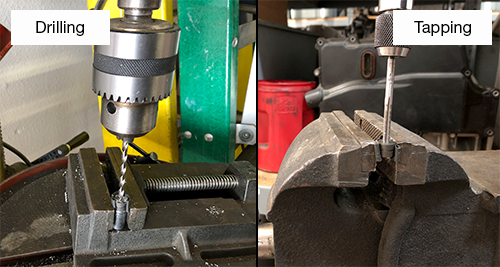 |
Follow the same process when using an OE plug, just keep in mind that there is no pre-drilled hole to get you started. To clarify, the OE plug is utilized in Figures 3–5 to illustrate these actions.
| Figure 5 – Drilling Vacuum Access Holes into Plug |
|---|
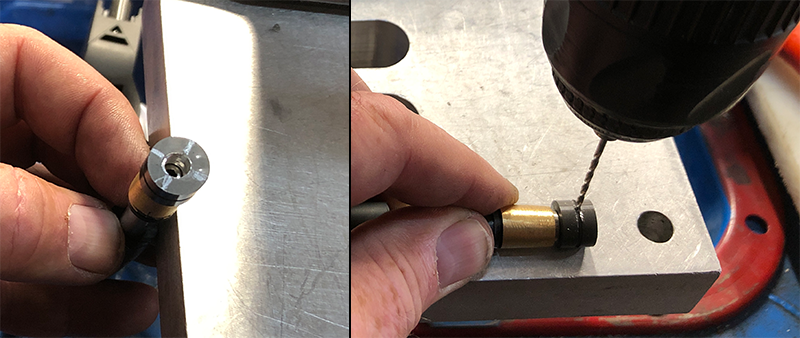 |
| Figure 6 – Deburring |
|---|
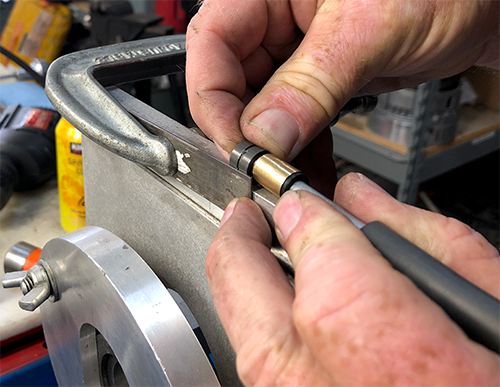 |
Now, use this tool as shown to vacuum test the switch valve bore (Figure 7). It's a simple way to get a very accurate test before and after every repair (Figure 8), just make sure to use your oversized tool if you're testing a reamed bore.
| Figure 7 – New Vacuum Testing Switch Valve Tools |
|---|
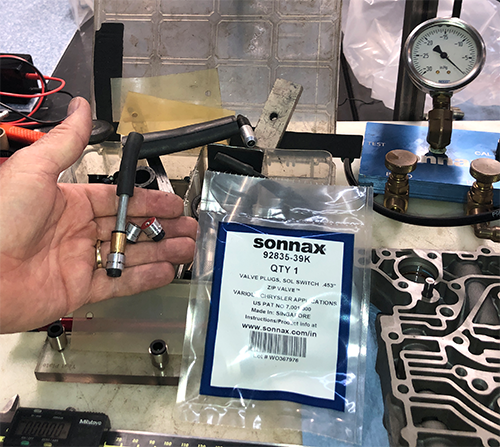 |
| Figure 8 – Testing with Tool Before & After Repairs |
|---|
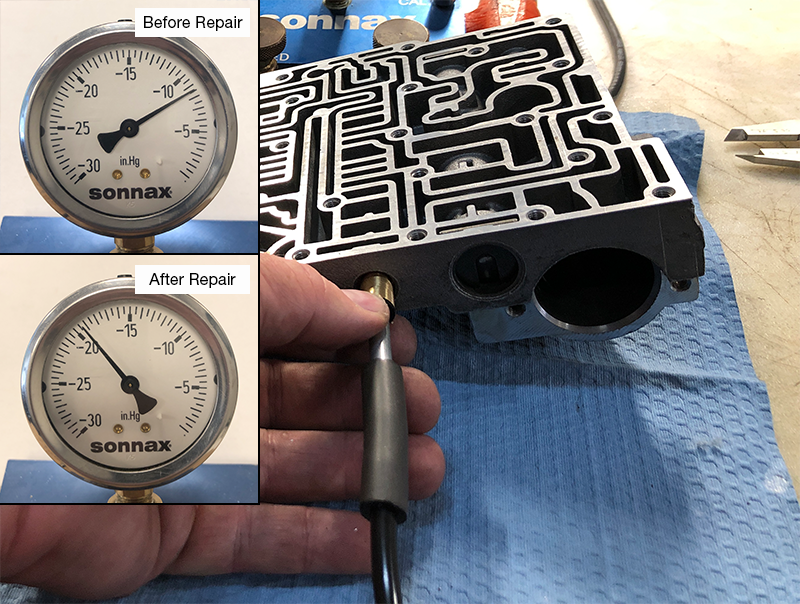 |
This tool was designed because the testing using the traditional test plate was not useful with the 62TE family of these electronic transmissions. Thinking outside the box, you can be creating homemade tooling to ease testing as well as assembly issues. Truthfully, in my travels and teaching, I have not met any technician who doesn't have an arsenal of homemade tools. This article is just a simple example of making a tool that makes testing a breeze. Always think, how can I make this test easier, and typically you will do the rest!
Randall Schroeder is a Sonnax technical support training specialist. He is a member of the Sonnax TASC Force (Technical Automotive Specialties Committee), a group of recognized industry technical specialists, transmission rebuilders and Sonnax Transmission Company technicians.
September 16, 2024
Randall Schroeder
Required
Recommended
Required
Recommended
Required
Recommended
Fits bores containing OE switch valve with .453" dia. large spool only.
Required
Recommended
While Sonnax makes every effort to ensure the accuracy of technical articles at time of publication, we assume no liability for inaccuracies or for information which may become outdated or obsolete over time.